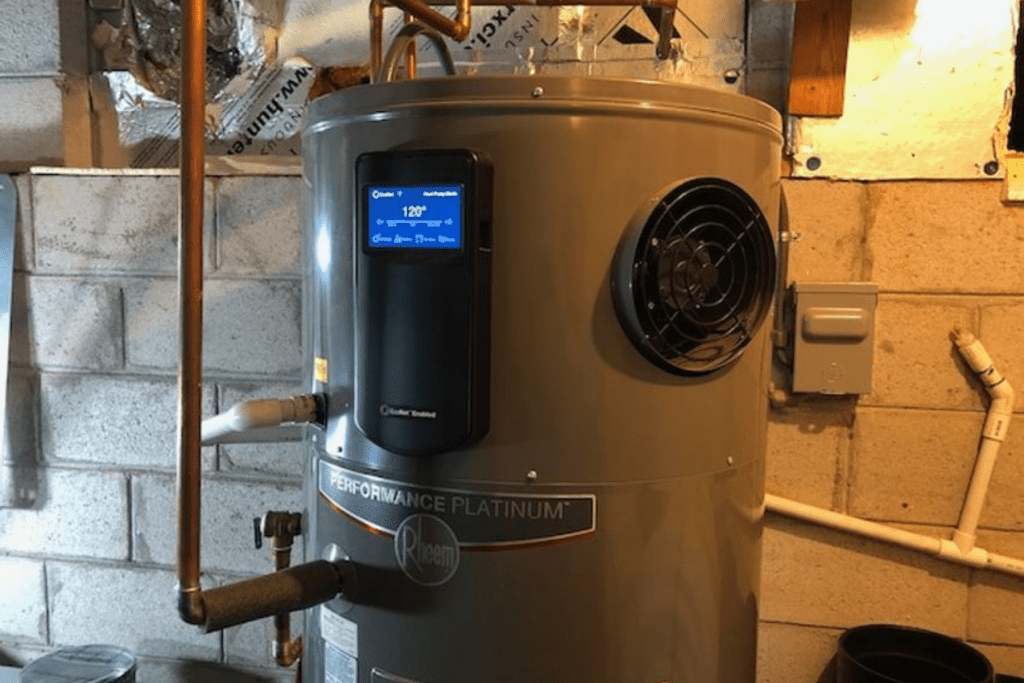The Benefits of a Heat-Pump Water Heater
Reposted from: https://www.greenbuildingadvisor.com/article/living-with-a-heat-pump-water-heater
By Allison A. Bailes III, PhD | December 2, 2021
In 2019, we had the nasty old fossil-gas, natural-draft water heater removed. (That’s it in the photo below.) Outside of running a gasoline-powered generator or kerosene space heater inside a house, this kind of water heater is probably the No.1 source of carbon monoxide in homes. Yes, the hot water is cheap, but how much is your health worth? So my replacement for this fossil was a heat-pump water heater (HPWH). It’s a Rheem Performance Platinum, and I love it!
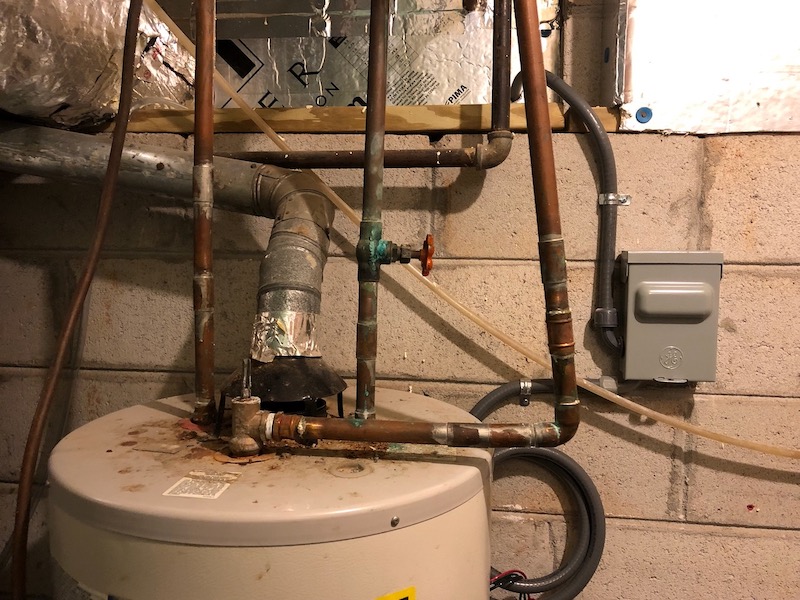
I am not an expert in heat-pump water heaters, and I don’t know the range and availability of products all that well. But I have friends who keep up with that stuff, so I asked one of them. John Semmelhack of Think Little is a big proponent of all-electric homes, and he recommended the Rheem model that I ended up buying. Manufacturers are always changing their models, though; I bought the Gen 4 but what’s available now is the Gen 5 model (I think). Also, when you’re searching for information, Rheem uses the term “hybrid water heater” because it has two sources of heat. The main source is the heat pump, but it also has built-in electric resistance heating to supplement the heat pump.
One of the choices you have to make when buying any water heater is size. I sprang for the 80-gal. model for a simple reason: If I’m going to use a heat-pump water heater, I want it to use the heat pump all the time. I don’t want to use the electric resistance heating element at all unless the heat pump fails. The smaller the tank you buy, the more likely it is you’ll have to use some electric resistance heating.
The bigger tank has the other advantage of having more hot water available. My 80-gal. model has an 89-gal. first-hour rating. Did I go overboard? Yeah, probably. I do that sometimes. In September, we put it to the test, as we had family in town for my 120th birthday party.* The larger tank provided all the hot water we needed with five people in the house, and it stayed on heat pump–only mode the whole time.
The Rheem app
The Rheem HPWH connects to WiFi and has a nice app for your smartphone. The screenshot below shows the main screen for the water heater, with the basic info about the Gen 4 model including water temperature setting (120°F), mode (heat pump–only), and links to other data (schedules, usage report, and WiFi settings).
It has one annoying feature I wish Rheem would change: That green bar is ALWAYS there because I’ve set the mode to heat pump–only. Their so-called Energy Saving mode would actually use more energy because it would use electric resistance heat sometimes.
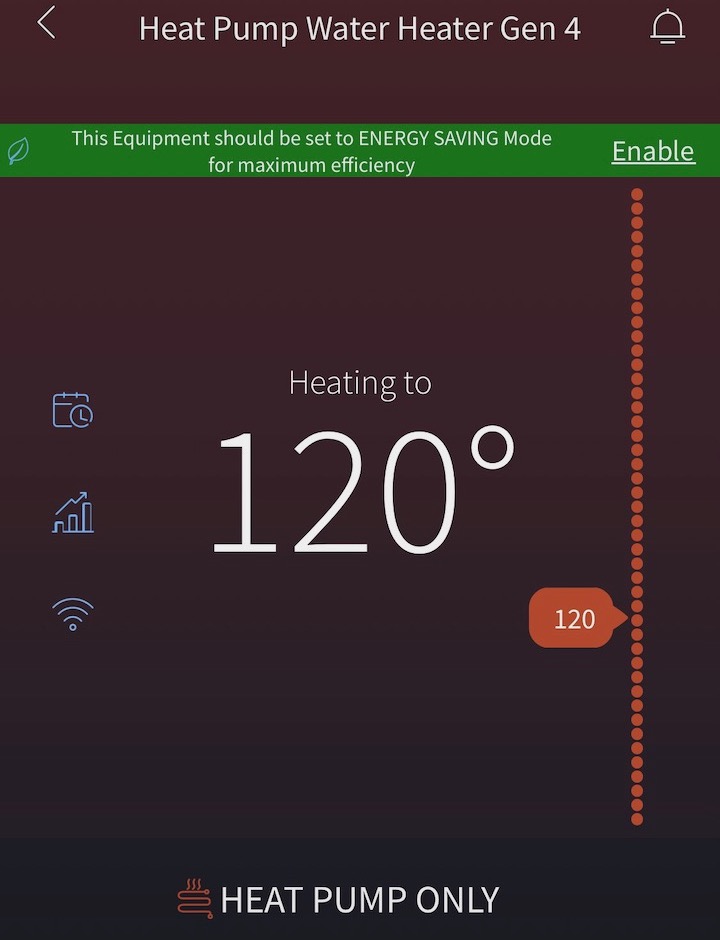
We fired up, so to speak, our new water heater on September 14, 2019, so we’ve passed the two-year mark. How much electricity have we used in that time? The chart below shows our first full year of data. The total was 486 kilowatt-hours (kWh). The lowest month was August at 23.75 kWh, and the highest was December at 68.6 kWh.
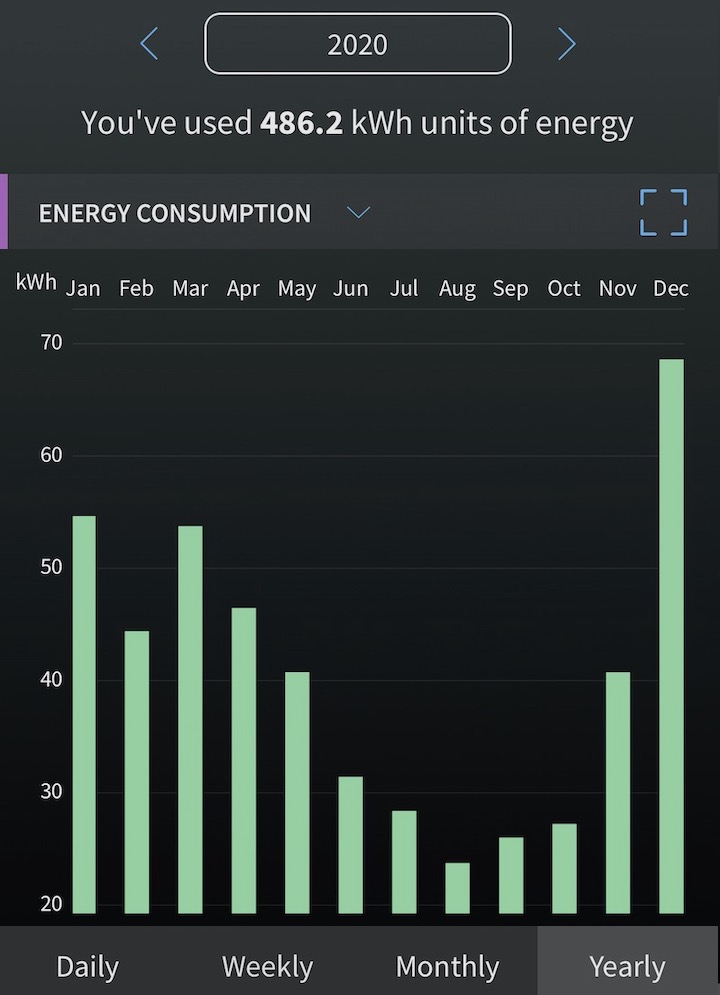
A second reason is that we use more hot water in winter, although I haven’t measured that yet. Next year, however, I’m going to set up flow meters and temperature sensors on my all-new hot water plumbing when I remodel my basement. Then I’ll have the data to prove it, at least in my house. Those data will also tell me how many kilowatt hours it takes to get a gallon of hot water, by each month of the year and averaged over the whole year.
A third reason we use more energy in the winter is that the HPWH pulls heat out of the air, and our basement air is cooler in winter. In my case, we currently don’t heat or use the basement much, so it’s not a big deal. In cold climates, it can be a big deal.

Our annual consumption
Since it’s been over two years since I started up the HPWH, I can tell you how much energy we used in that time and how much it has cost us. From September 14, 2019 to September 14, 2021, we used 1002 kWh. I also track our electricity use in a spreadsheet (doesn’t everybody?), and over that period, our average rate from Georgia Power has been almost exactly $0.10 per kWh (excluding taxes and fees). So, we’ve paid just a bit (two bits actually) over $100 for two years’ worth of hot water.
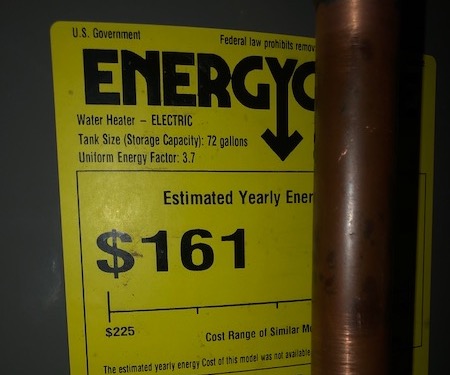
I had already made the decision to get rid of our gas furnace, however, and that meant our only remaining gas appliance would be the water heater. At about $38 per month (screenshot above), the fees just to have gas would make the HPWH a big money saver. Based on a marginal cost of $1200, the extra $450 per year would give me a simple payback of about 3-1/2 years!
If I had replaced our gas water heater with an electric-resistance water heater, we still would have saved money; just not as much. The efficiency of water heaters is rated by something called the Uniform Energy Factor (UEF). Higher numbers are better, and my HPWH has a UEF of 3.7. (You can see it on the EnergyGuide above.) A standard electric water heater has a UEF of about 0.9, making my HPWH about 4.1 times as efficient.
Instead of 501 kWh per year, I would have used about 2000 kWh per year with an electric-resistance water heater. At $0.10 per kWh, I would have saved about $150 per year on water heating. With a simple payback of about 10 years in this case, it wouldn’t be hard to justify this purchase for economic reasons, assuming a 15- or 20-year lifetime and minimal maintenance costs.
Noise, ducting, and filtration
One thing people have complained about with some HPWHs is that they’re too noisy inside the house. Some probably are, so I measured mine using the NIOSH SLM app on my phone. Here are my results:
- 53 dBA — 1 ft. straight out from the exhaust port
- 48 dBA — 1 ft. to the side of the exhaust port
- 46 dBA — 5 ft. away, at the mechanical room door
- 37 dBA — 4 ft. to the side of the mechanical room door with door open
That’s pretty quiet. For reference, here are some other noise levels on this scale:
- 60 dBA — normal conversation
- 50 dBA — rainfall
- 40 dBA — refrigerator hum
- 30 dBA — soft whisper
Another nice feature of the Rheem model I bought is that it allows for the intake air and exhaust air to be ducted. You can see the exhaust port in the lead photo. It’s to the right of the digital display screen. My water heater is in the basement, so I could run a duct up to the encapsulated attic to bring in warmer intake air and make the heat pump more efficient. But it’s probably more trouble than it’s worth in my case.
I will need to run a short duct to the mechanical room wall, though. After I remodel the basement and put a door on the mechanical room, the HPWH won’t have much air in that space, so the duct will bring in air from the rest of the basement.
Even without ducting air from another place, the ability to duct intake air allows for putting a better filter on the system. The filter that comes with it is one of those paper-thin, see-through filters that mostly catches larger stuff. I haven’t done it yet, but when I remodel and move the water heater, I’ll also add a decent filter to the system and get it all sealed up to eliminate bypass. I want to keep that coil as clean as possible.
Is it worth it?
In my case, it certainly was worth it. We have low rates for fossil gas here in Georgia, but they come with high fees. Getting rid of the backdraftable gas water heater was a high priority for me. Not having to worry about low-level carbon monoxide poisoning (or worse) brings a peace of mind that’s priceless. And I’m doing my part to decarbonize my existing home by going all-electric. I could have saved on first cost by going with a standard electric-resistance water heater. Had I been ready to put photovoltaics on my roof, I might have done that.
I am really happy with my HPWH. It’s quiet, efficient, and gives us all the hot water we desire. It even provides a little bit of cooling and dehumidification—the topic of an upcoming article.

